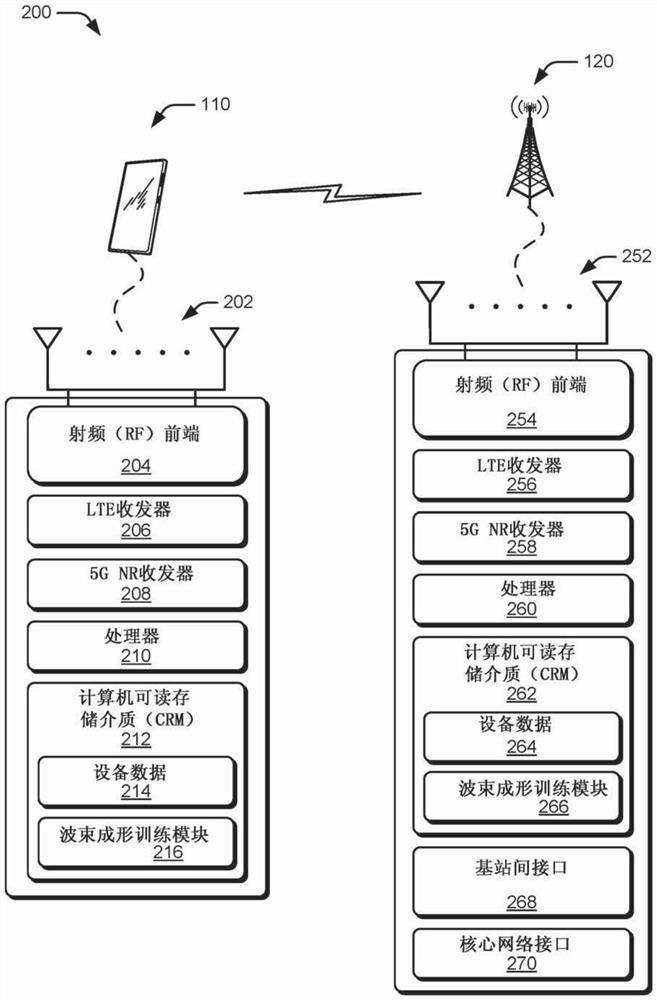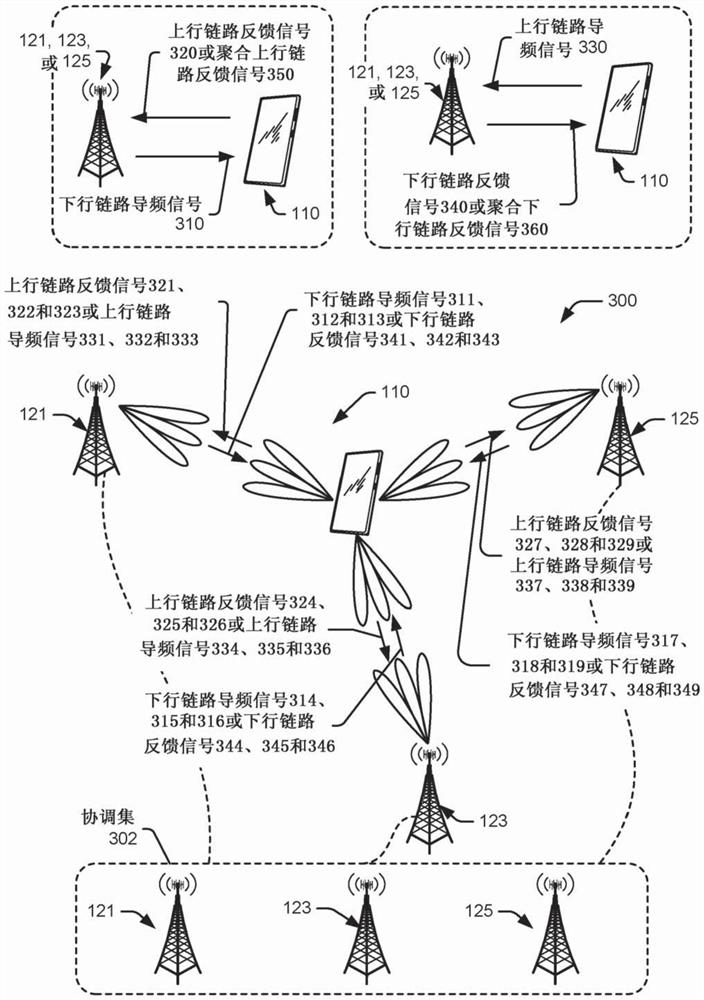Parallel beamforming training with coordinated base stations
A beamforming and base station technology, applied in the field of parallel beamforming training with coordinating base stations, can solve problems such as high path loss, difficulty in receiving mmW signals for base stations, and increasing the effective communication range of mmW transmissions
- Summary
- Abstract
- Description
- Claims
- Application Information
AI Technical Summary
Problems solved by technology
Method used
Image
Examples
example 1
[0111] Example 1: A method for a user equipment, the method comprising the user equipment:
[0112] receiving a first downlink pilot signal from a first base station within the coordinating set;
[0113] generating a first uplink feedback signal based on the first downlink pilot signal;
[0114] receiving a second downlink pilot signal from a second base station within the coordinating set;
[0115] generating a second uplink feedback signal based on the second downlink pilot signal;
[0116] transmitting the first uplink to the first base station in a first pattern that interleaves a first transmission time of the first uplink feedback signal with a second transmission time of the second uplink feedback signal feeding back a signal and sending the second uplink feedback signal to the second base station; and
[0117] performing parallel beamforming training with the first base station and the second base station according to the first pattern.
example 2
[0118] Example 2: The method of Example 1, wherein:
[0119] The first uplink feedback signals respectively correspond to the first downlink pilot signals;
[0120] The second uplink feedback signals respectively correspond to the second downlink pilot signals; and
[0121] The first reception time of the first downlink pilot signal and the second reception time of the second downlink pilot signal are interleaved, wherein the second pattern represents the first downlink The interleaving of the road pilot signal and the second downlink pilot signal,
[0122] The method further comprises:
[0123] The first pattern is determined based on the second pattern such that the first uplink feedback signal is based on the interleaving of the first downlink pilot signal and the second downlink pilot signal with the The second uplink feedback signal is interleaved.
example 3
[0124] Example 3: The method according to Example 2, further comprising:
[0125] receiving a scheduling configuration message from the first base station, the scheduling configuration message specifying a first time delay and a second time delay, wherein:
[0126] a first transmission time of the first uplink feedback signal is interleaved with a first reception time of the first downlink pilot signal based on the first time delay; and
[0127] A second transmission time of the second uplink feedback signal is interleaved with a second reception time of the second downlink pilot signal based on the second time delay.
PUM
 Login to view more
Login to view more Abstract
Description
Claims
Application Information
 Login to view more
Login to view more - R&D Engineer
- R&D Manager
- IP Professional
- Industry Leading Data Capabilities
- Powerful AI technology
- Patent DNA Extraction
Browse by: Latest US Patents, China's latest patents, Technical Efficacy Thesaurus, Application Domain, Technology Topic.
© 2024 PatSnap. All rights reserved.Legal|Privacy policy|Modern Slavery Act Transparency Statement|Sitemap



